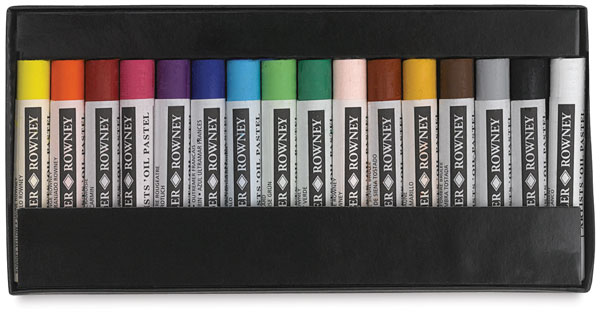
If you purchase an art kit from a store or catalog, it will most likely include oil pastels among the markers and colored pencils. The size and shape of crayons, these pastels are a favorite with young artists, producing vibrant colors that are easily blended. Because inert oils and wax are used as a binder in these pastels, they never yellow or harden, therefore they never crack. They are also acid free and can be used on any paper as well as other surfaces.
A Bit of History
Oil pastels are a relatively new medium, being introduced during the first part of the twentieth century. At that time, Japanese artist Kanae Yamamoto suggested that drawing should encourage children’s creativity, and he recommended that children use a medium that creates soft yet brilliant colors. At the same time, two brothers-in-law, Rinzo Satake and Shoukou Sasaki, were looking for art products for the children enrolled at the private school they owned. Together they started the Sakura Crayon Company. In 1921, with Yamamato’s help, they developed Cra-Pas, a medium that was as easy to use as a crayon but had the brightness of a pastel. They continued to improve their product, which was still regarded as a children’s medium.
In 1947, however, artists Henri Goetz and Pablo Picasso approached Henri Sennelier, asking him to create professional pastels for adults. Sennelier did just that, producing pastels that could be used on anything: wood, canvas, metal, glass, and paper. Other companies later produced their own brands. Today, you can buy small students sets for under $2.00 or professional sets for over $100. The more expensive pastels have a higher ratio of pure pigment to the oil & wax binder is higher, and the quality of the ingredients is better.
For Art Projects Today
Unlike soft pastels, which feel powdery or chalky, these pastels have and creamy texture which doesn’t smudge as easily. Similar to soft pastels, however, colors placed beside each other can be blended together for some beautiful results. When my students first try them, they tend to use them with a light touch, producing a crayon-like effect. By applying a little more pressure to the pastels, however, they can create brilliant pictures. Sometimes they use too much pressure and the pastels break; that’s not an issue, as the pastels are just as usable as a broken crayon.
You can buy these pastels at Art and Craft stores, or you can even find smaller sets at Wal-Mart. Blick Art Materials offers sets for both students and professionals.
Need a little inspiration? Here are some sites featuring beautiful art in oil pastels:
The Oil Pastel Society was formed in 2004 to promote oil pastels as a fine art medium. This organization also sponsors annual contests.
Another site to view is that of artist Sarah Theophilus. She creates pet portraits with oil pastels — extremely detailed and lifelike!

Please note: Only family-friendly comments will be published.